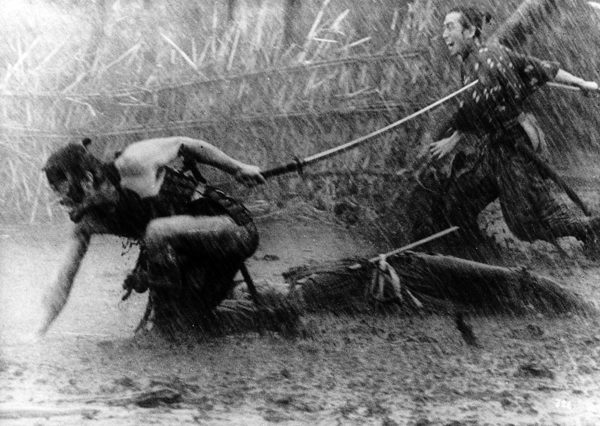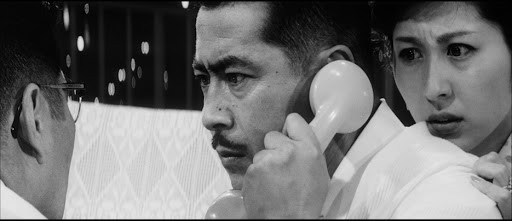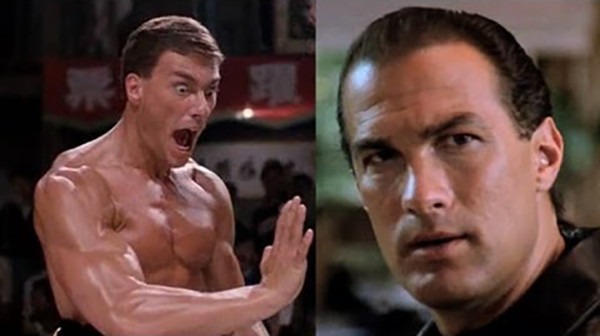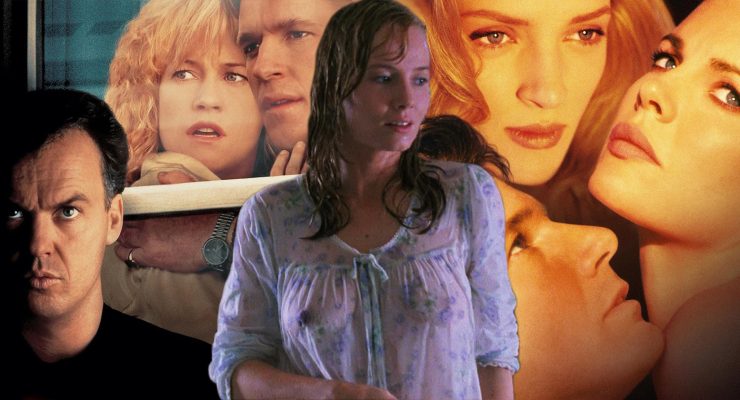Tom Jolliffe looks at two classic crime thrillers from Akira Kurosawa, Stray Dog and High and Low…

His reputation precedes him. Akira Kurosawa is one of the greatest directors of all time. A master of cinema, who took a degree of influence from old Hollywood gangster films and Westerns and refined them in his own inimitable style. Kurosawa would gain most of his world wide acclaim through the Samurai genre, where he was particularly prolific. Lets face it, Seven Samurai isn’t just the greatest Samurai film ever made, it’s one of the best films full stop. His films had engaging characters, simple but enthralling stories and great actors (not least a lengthy collaboration in many of his most iconic works with Toshiro Mifune, one of the most charismatic and magnetic actors to ever grace the silver screen).

New fans of Kurosawa tend to start with his period films and you’re all but guaranteed to see him at the top of his game watching the likes of the aforementioned Seven Samurai, as well as Yojimbo, Sanjuro, The Hidden Fortress and more laterrly, Ran and Kagemusha. However, Kurosawa did a number of contemporary films with as much skill as he did in his period epics. Films like Ikuru showed a gift to tell contemporary and insightful stories, that would stand up against the kind of films Yasujiro Ozu was making at the time (though in his own distinct style). In 1949, not long after the war and the beginning of a freer, creative boom in Japanese cinema, Kurosawa and Ozu were ahead of the curve. Kurosawa made an exceptional police procedural, with Stray Dog.

A film that took recognisable formula from 30’s American but put Kurosawa’s distinct style and vision on it. It’s a film way ahead of its time and even in Kurosawa’s oeuvre, it marked one of his first really free and confident works. A creative vision that was perfectly delivered. There are so many great noir tropes, that through Kurosawa’s eye, feel fresh for the era, but likewise, timeless in the years since. It still looks great to this day with some expert pacing, intelligent writing and a finale that has inspired a number of modern era directors (including David Fincher, Bong Joon-Ho and John Woo). Kurosawa always had a gift for making you feel the physical nature of a film too. Whether it’s rain beating down in sodden mud, or intense heat, he was adept at creating atmosphere and the films setting was always a key aspect. Stray Dog is no different, set during a heat wave as a rookie cop (Mifune) has his colt pistol swiped by a pick pocket, it’s a film with perpetual sweat that we begin to feel as a viewer.

The beauty of Stray Dog too is the seeming insignificance of the case. A rookie mistake and a missing police issue gun, floating around the black market, but not as if they’re tracking serial killers. For a young Toshiro Mifune it’s an interesting early role that belies the confident, almost peerless bravado of his most iconic roles. Here he’s a slightly hapless rookie, lacking confidence and conviction, but slowly finding it through the film as he, through grim determination, sets out to right his mistake. Kurosawa plays out the slow uncovering of leads. Some trail to nothing whilst others have significance. In Hollywood we often only see the big plays, or the intensity of strong leads. Stray Dog really does convey some of the mundane nature of procedure and investigation. It all comes together inevitably as the lead suspect is finally traced and then there’s a great finale with a brilliant build up that demonstrates a perfect handle of shot composition and editing pace that was decades ahead of its time. Kurosawa likes moments of contradiction too, like a stand/off where the sound of a nearby piano player practising interrupts the tension. It’s classic Kurosawa, and the kind of thing we’ve seen regularly in more recent times from a director like John Woo. Stray Dog really was genre defining and a key step in Kurosawa becoming so prominent in Japan, and in attaining a worldwide audience.

In High and Low, there’s an interesting depiction of class divides among an interesting tale as Mifune plays a business executive (whose post-modern detached home overlooks the poor town below from its cliff top view) whose becomes embroiled in a kidnapping case after his chauffeurs son is mistakenly taken (in place of Mifune’s son). Reluctantly, Mifune bankrupts himself to pay the ransom. From then on, it turns into police procedural as detectives are compelled by guilt at Mifune’s situation, to uncover the culprit. Much like Stray Dog there are similar atmospherics. Kurosawa also ensures we feel that divide between Mifune above, and the poor working folk below (something that feels like it must have passed the thoughts of Bong Joon-Ho whilst writing Parasite).

One great aspect of High and Low is the compelling shift in the film from midway. This terse kidnapping story as Mifune must deal with the kidnappers and keep the police involvement a secret, offers a great display of Mifune’s acting skills. It’s very much his picture for the first half. Feeling there’s no alternative, and with the police unable to find a suspect, there’s no choice but to pay the ransom. The boy is returned but Mifune is ruined. Then Tatsuya Nakadai, as the Detective in charge, is determined to track down the culprit. By the time High and Low was made, Kurosawa had really become as confident as one can probably get as a film-maker. Everything is completely assured here. The film, which like Stray Dog, goes through the meandering nature of an investigation and the frustration of drawing blanks. It is brilliantly paced. Atypical of Kurosawa too, it’s magnificently shot with loads of glorious noir style visuals. The set piece moments when the pace quickens, are simple but effectively tense. Kurosawa shows a mastery of pacing and creating tension.

Everything leads to a great finale, but it’s the journey getting there. It’s the painstaking efforts of the police team in doing their work and trying to track the kidnapper. In recent years, David Fincher showed that progressive and constant tracking in something like Zodiac. In the way it’s paced and in showing the futility of certain avenues of investigation, Fincher certainly owed something to High and Low, whether the film inspired him directly or indirectly. A lot in High and Low, with its bleakness and its aversion to glamour, was something that permeated many of the American thrillers of the 70’s. That gritty, pessimistic era, probably the strongest in American cinema, certainly owed a tip of the cap to Kurosawa.

Cinephiles looking to expand their horizons with Kurosawa’s non-Samurai work, or indeed classic crime thrillers, should certainly check out the blue prints he laid down with Stray Dog and High and Low. Have you seen either film? What are your thoughts on Stray Dog or High and Low? Where do they rank in Kurosawa’s catalogue? Let us know your thoughts on our social media channels @flickeringmyth…
Tom Jolliffe is an award winning screenwriter and passionate cinephile. He has a number of films out on DVD/VOD around the world and several releases due in 2020/21, including The Witches Of Amityville Academy (starring Emmy winner, Kira Reed Lorsch), Tooth Fairy: The Root of Evil and the star studded action film, Renegades. Find more info at the best personal site you’ll ever see here.











